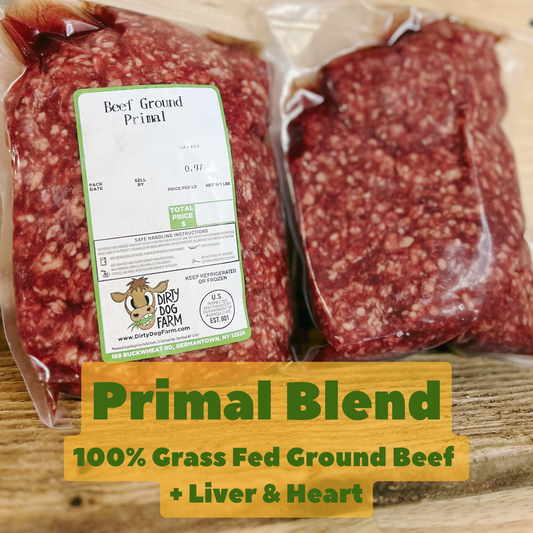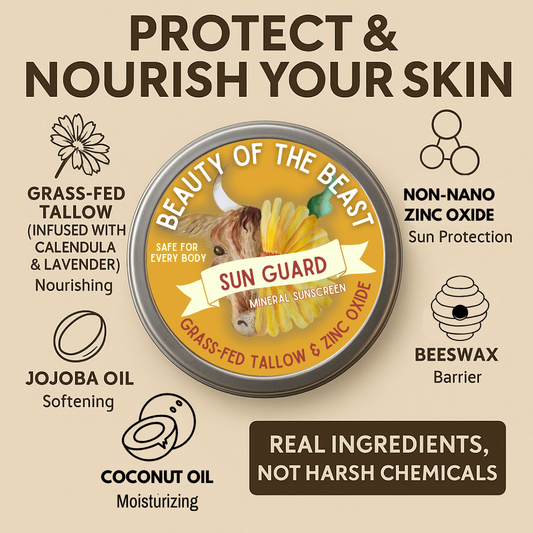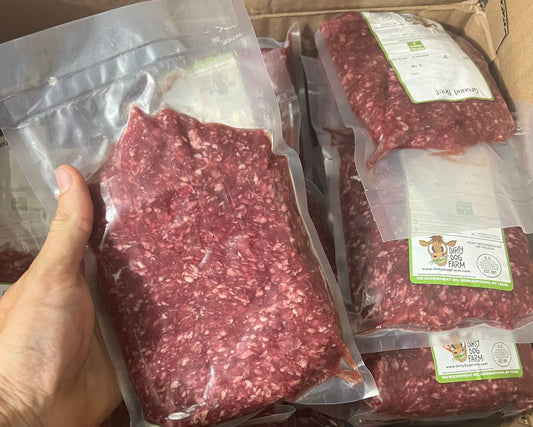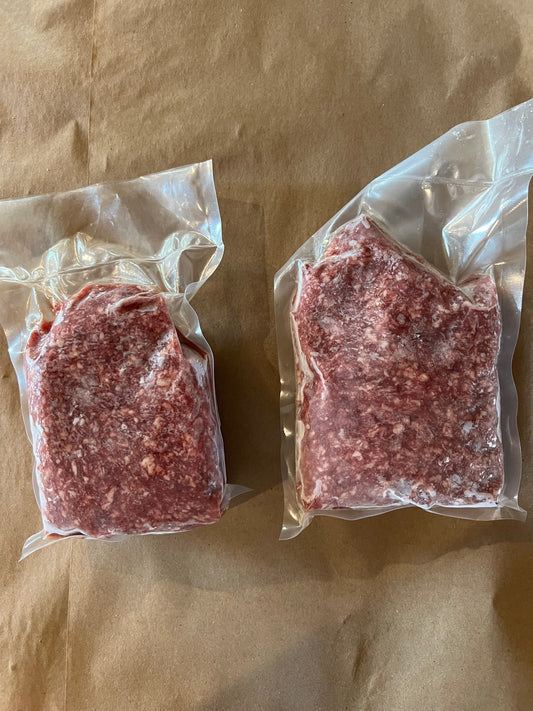2 WAYS WE'RE MAKING THE BEST OF A DRY SUMMER
2-min read
Nothing makes a farmer sad faster than a drought.
Grass doesn’t grow. Soil dries up.
And that’s under normal conditions.
We are in year 2 of regenerating a property that was previously cropped. So our ground cover and soil health are nowhere near where we need them for withstanding a dry, hot summer.
We’ve got some scorched earth and a lot of annual weeds outcompeting the yound perennial grasses we’ve planted. It would be easy to start freaking out.
Luckily, we have two strategies to make it through:
1. Feeding hay that we’ve purchased (ideally for the winter)
2. Planting annual forages with a no-till seeder
Both options are expensive, and not ideal. But they aren’t just ways to get by. They are long term investments in the health of our land.
-
Purchased hay is just a 1,000-pound bale of fertility and pasture seed. So instead of leaving the animals in one area, we are continuing to rotate them (slowly) around the property, and unrolling the hay in the fields to spread that goodness around.
-
Annual grasses and legumes will grow under pretty dire conditions. Their survival depends on aggressive growth and reproduction, not sticking around for the long haul. (The main image here is our 8 species cover crop, growing despite the weather)
-
The hay and annuals provide food for the cows, but they also ‘waste’ a lot by walking on it. The trampled hay and grasses cover the soil, allowing it to stay moist and fertile during dry spells, and finally decomposing and incorporating into the soil as organic matter.
-
In the fall when it gets too cold for our summer annuals, they will die off, leaving root systems several feet deep. Those deep roots can help break through compaction in the soil, but they also decompose, leaving behind an organic matter bank stretching across soil layers
-
All that organic matter is made of carbon, which can hold about 8x its weight in water, so instead of running off or puddling up, the rain we do get will be held in the soil. (For context, just a 1% increase in soil organic matter can hold an additional Olympic swimming pool worth of water across just a few acres…)
A few seasons from now, our fields might not even notice a dry summer like this. The farms we learned our methods from can grow lush forage under harsh conditions, thanks to fertile soil storing plenty of water. We can’t wait until our land can do the same!
More Recommended Reading
Something's Been Bothering Me
I follow a lot of other small farms and regenerative/grass-fed/organic meat businesses on social media,...
Something's Been Bothering Me
I follow a lot of other small farms and regenerative/grass-fed/organic meat businesses on social media,...

2-min read
Grass Fed vs. Grass Finished - What does it all...
Terrific question came in from one of our subscribers."Can you explain the difference between Grass-Fed...
Grass Fed vs. Grass Finished - What does it all...
Terrific question came in from one of our subscribers."Can you explain the difference between Grass-Fed...

2-min read
I owe Big Food/Pharma/Ag an apology
American style industrial agricultural/food systems are making people in China sick. So they are turning...
I owe Big Food/Pharma/Ag an apology
American style industrial agricultural/food systems are making people in China sick. So they are turning...

2-min read
Fake Meat is Back...now with "Grilled Beef Flav...
One of the fun parts of being a friendly neighborhood beef farmer, is that I...
Fake Meat is Back...now with "Grilled Beef Flav...
One of the fun parts of being a friendly neighborhood beef farmer, is that I...

2-min read
I've Got Beef with the NY Times (Conclusion)
This is the conclusion to my series on the NY Times' latest beef hit-piece "Save...
I've Got Beef with the NY Times (Conclusion)
This is the conclusion to my series on the NY Times' latest beef hit-piece "Save...

2-min read
I've Got Beef with the NY Times (Part 2)
This is Part 2 of our series responding to the NY Times' latest beef hit-piece...
I've Got Beef with the NY Times (Part 2)
This is Part 2 of our series responding to the NY Times' latest beef hit-piece...

2-min read
I've Got Beef with the NY Times!
Last week the New York Times published an article called "Save the Planet, Put Down...
I've Got Beef with the NY Times!
Last week the New York Times published an article called "Save the Planet, Put Down...

2-min read
What Makes New York Grass-Fed Beef The Best
Discover why New York 100% Grass-Fed Beef is a rising star in the beef industry....
What Makes New York Grass-Fed Beef The Best
Discover why New York 100% Grass-Fed Beef is a rising star in the beef industry....

2-min read
Beef Share Basics: Why Our Members Love Beef Sh...
Today, I'm going to tell you why Beef Shares are so great!I know I'm biased,...
Beef Share Basics: Why Our Members Love Beef Sh...
Today, I'm going to tell you why Beef Shares are so great!I know I'm biased,...
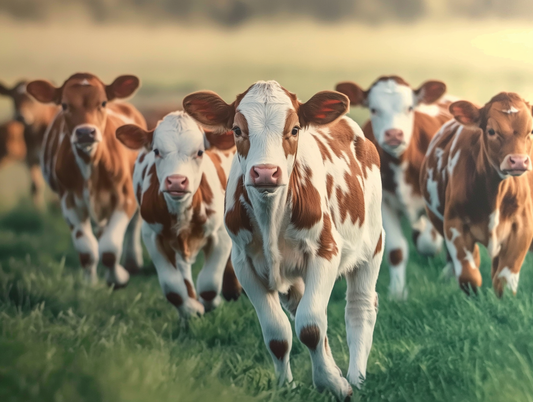
2-min read
Beef Share Basics - How does the "Beef Share Cl...
Yesterday we went over the very basics about Beef Shares. What they are, what you...
Beef Share Basics - How does the "Beef Share Cl...
Yesterday we went over the very basics about Beef Shares. What they are, what you...
Beef Shares Basics - What is a Beef Share?
What is a Beef Share? A Beef Share is literally your chance to reserve a...
Beef Shares Basics - What is a Beef Share?
What is a Beef Share? A Beef Share is literally your chance to reserve a...

2-min read
The Ultimate Guide to Freezers!
Freezer Space is the number one concern new customers have when joining our Beef Share...
The Ultimate Guide to Freezers!
Freezer Space is the number one concern new customers have when joining our Beef Share...

2-min read
A Wedding On The Farm
Its been a little while since I sent a proper newsletter.Its been a crazy few...
A Wedding On The Farm
Its been a little while since I sent a proper newsletter.Its been a crazy few...
5 Ways A Beef Share Will Change Your Life
I wasn't always a farmer.Before Jesse and I started the farm in 2016, I lived...
5 Ways A Beef Share Will Change Your Life
I wasn't always a farmer.Before Jesse and I started the farm in 2016, I lived...
The Secret 'Meat Room' at a Vegan Restaurant
Last week we got the rare chance to laugh at the news, when the NY...
The Secret 'Meat Room' at a Vegan Restaurant
Last week we got the rare chance to laugh at the news, when the NY...
BREEDS WE RAISE FOR 100% GRASS-FED BEEF
Our herd of 100% Grass-fed Beef Cattle are the stars of our farm (and definitely...
BREEDS WE RAISE FOR 100% GRASS-FED BEEF
Our herd of 100% Grass-fed Beef Cattle are the stars of our farm (and definitely...
2 WAYS WE'RE MAKING THE BEST OF A DRY SUMMER
Nothing makes a farmer sad faster than a drought. Grass doesn’t grow. Soil dries up....
2 WAYS WE'RE MAKING THE BEST OF A DRY SUMMER
Nothing makes a farmer sad faster than a drought. Grass doesn’t grow. Soil dries up....
